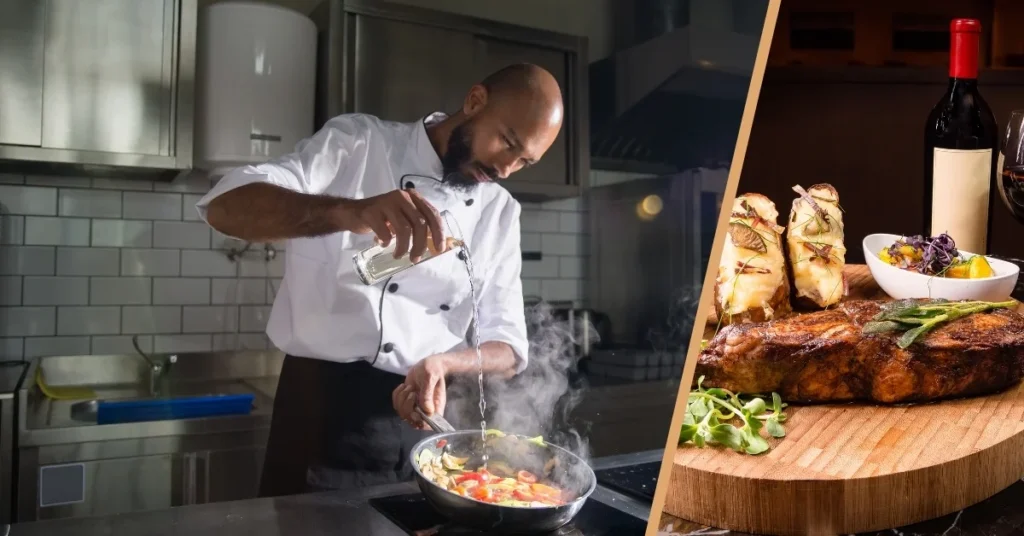Turkish cuisine is known for its rich flavors, deep-rooted traditions, and nutritious meals. One such dish, a chickpea-based delight, has been enjoyed for centuries due to its unique taste and health benefits. Whether served as a hearty stew, a side dish, or even incorporated into modern recipes, this meal is a staple in many Turkish households.
This article explores the origins, cultural significance, nutritional benefits, preparation methods, and culinary versatility of this famous Anatolian specialty.
The Historical Roots of This Chickpea-Based Dish
The Role of Chickpeas in Turkish Cuisine
Chickpeas, also known as garbanzo beans, have been cultivated in Turkey for over 7,000 years. The Anatolian region provides the perfect growing conditions, making these legumes a key ingredient in many traditional dishes. Their culinary versatility has allowed them to be used in stews, soups, and even desserts.
Evolution Over Time
Initially, this dish was a simple preparation meant to nourish farmers and travelers. Over time, different cooking techniques and spices were introduced, creating variations across various regions in Turkey. Today, this hearty meal is a cherished part of Turkish culture and has also gained popularity worldwide.
Cultural Importance and Traditional Significance
A Dish for Special Occasions
Food plays a crucial role in Turkish traditions; this chickpea-based meal is no exception. It is often prepared for:
- Family gatherings: A comforting meal that brings people together.
- Religious celebrations: Frequently served during Ramadan and other special days.
- Community feasts: A symbol of hospitality and sharing.
Passed Down Through Generations
Many Turkish families have their own unique way of preparing this dish, with recipes being passed down from one generation to another. This continuity keeps the culinary traditions alive while allowing for slight adaptations over time.
Nutritional Benefits of This Traditional Dish
This dish is more than just delicious; it’s packed with essential nutrients that contribute to a balanced diet.
Nutritional Breakdown
- Rich in protein: Supports muscle growth and overall body function.
- High in fiber: It aids in digestion and promotes gut health.
- Loaded with vitamins and minerals: A good source of iron, magnesium, and B vitamins.
- Supports heart health: Helps lower cholesterol levels and maintain cardiovascular wellness.
Ideal for a Healthy Lifestyle
This meal is perfect for individuals following plant-based diets, as it provides a high-protein alternative to meat. It is also gluten-free, making it a great option for those with dietary restrictions.
How to Prepare This Classic Turkish Dish
Making this hearty meal at home is easier than you think!
Ingredients You’ll Need:
- Chickpeas (soaked overnight)
- Olive oil
- Onions & garlic
- Tomato paste
- Turkish spices (cumin, paprika, black pepper)
- Lemon juice
Step-by-Step Cooking Guide:
- Prepare the chickpeas: Soak them overnight to soften.
- Sauté the onions & garlic. Heat olive oil and cook until golden brown.
- Add Tomato Paste & Spices: Stir well to release the flavors.
- Simmer Until Tender: Allow the ingredients to cook on low heat.
- Garnish & Serve: A squeeze of lemon juice enhances the final taste.
Pro Tips for a Perfect Dish
- Serve with Turkish bread for a more authentic experience.
- Experiment with additional herbs like parsley or dill.
- Pair with a glass of traditional Turkish tea or red wine.
Unique Flavor Profile and Culinary Versatility
The Perfect Blend of Spices
This dish is known for its warm, earthy, and slightly smoky taste. Key seasonings like cumin and paprika bring out the rich flavors, while lemon juice adds a hint of acidity to balance the dish.
A Meal for Every Occasion
- As a stew: The traditional and most popular way to enjoy it.
- As a stuffing for grape leaves: A variation found in Mediterranean cuisine.
- Infusion dishes: Used in modern plant-based recipes.
This meal’s culinary versatility makes it a great addition to various diets and meal plans.
Pairing This Dish with Drinks and Sides
Best Beverages to Accompany This Meal
- Turkish Tea: A classic pairing that enhances the dining experience.
- Barbaresco Wine: A full-bodied red wine that complements the flavors.
Side Dishes That Work Well
- Stuffed grape leaves: A Mediterranean favorite.
- Turkish rice pilaf: A perfect match for the hearty chickpea dish.
- Flatbread: Great for scooping up the rich, flavorful stew.
Chickpeas in Turkish Desserts and Baking
Did you know that chickpea flour is also used in Turkish baking?
Gluten-Free Baking with Chickpea Flour
Many modern Turkish recipes incorporate chickpea flour into baked goods like:
- Marble cake: A rich and nutty twist on a traditional favorite.
- Chestnut cakes: A blend of Middle Eastern and Anatolian flavors.
The use of chickpea flour in culinary creations shows just how versatile this ingredient can be.
The Business and Economic Influence of This Dish
With an increased demand for healthy, plant-based meals, this chickpea-based dish is now being featured in restaurants around the world.
Why is it Growing in Popularity?
- Gluten-free and vegan-friendly: Appeals to a wider audience.
- Rich in nutritional value: A healthier alternative to traditional stews.
- Expanding awareness of Turkish cuisine: More people are discovering its benefits.
This dish is proving to be a valuable addition to both home kitchens and the restaurant industry.
Final Thoughts
From its humble origins in Anatolia to its modern adaptations, this chickpea-based specialty remains an essential part of Turkish culinary heritage. Whether you enjoy it as a stew, stuffing, or even baked goods, its nutritional benefits and deep flavors make it a meal worth savoring.
Next time you’re looking for a flavorful, healthy, and traditional dish, give this Turkish classic a try. You won’t be disappointed!
FAQs About Çeciir
What makes this dish special?
Its combination of rich spices, hearty chickpeas, and deep cultural significance makes it stand out in Turkish cuisine.
Is this dish healthy?
Yes! It is packed with protein, fiber, and essential vitamins, making it an excellent choice for a balanced diet.
Can I make this dish without soaking chickpeas overnight?
Yes, but using canned chickpeas will slightly alter the texture. Soaking dried ones provides the best results.
What other spices can I use to enhance the taste?
Try adding cinnamon, cardamom, or red pepper flakes for an extra kick.
Is this meal suitable for vegetarians?
Absolutely! This dish is naturally plant-based and fits perfectly into vegetarian and vegan diets.



